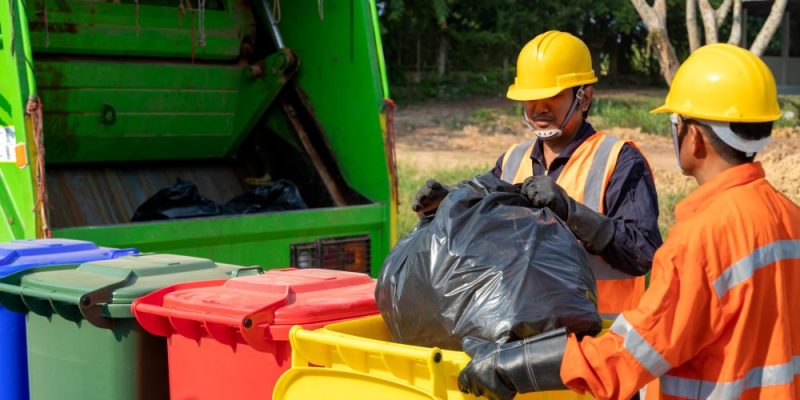A reliable trash pick up service represents more than mere convenience in modern Singapore; it constitutes a fundamental pillar of public health, environmental management, and civic order that most residents take for granted until the system falters. The infrastructure supporting waste collection across this island nation operates with remarkable efficiency, yet few citizens understand the complexity behind the simple act of leaving rubbish bins outside their homes. This system, evolved over decades of urban planning and environmental policy, deserves closer examination for what it reveals about Singapore’s commitment to cleanliness and its pragmatic approach to municipal governance.
The Historical Foundation of Waste Management
Singapore’s approach to refuse collection did not emerge fully formed. In the 1960s and 1970s, the young nation grappled with sanitation challenges common to rapidly urbanising societies. Waste collection occurred irregularly, and improper disposal created health hazards and environmental degradation. The government recognised that systematic waste management would prove essential to the city-state’s development ambitions.
The Public Waste Collection system, established through legislative reforms in the 1980s, divided Singapore into sectors, each assigned to licensed waste management operators. This competitive tendering process ensured standards whilst controlling costs. The National Environment Agency, created in 2002, assumed regulatory oversight, setting collection schedules, monitoring service quality, and enforcing environmental regulations. This framework transformed rubbish collection from an ad hoc municipal function into a professionally managed service integral to urban life.
How the Collection System Functions
The residential trash pick up service operates on fixed schedules determined by housing type and location. HDB estates receive collections either daily or on alternate days, depending on the block’s classification. Private residential properties, including condominiums and landed homes, follow similar patterns, though frequency may vary based on waste volume and contractual arrangements.
The system encompasses several distinct categories:
- General waste collection, handling everyday household rubbish disposed in standard bins
- Recyclable materials collection, processing paper, plastic, metal, and glass through the blue bin programme
- Bulky waste removal, addressing furniture, appliances, and large items requiring special handling
- E-waste collection, managing electronic equipment through designated recycling points
- Garden waste disposal, particularly relevant for landed properties with significant horticultural maintenance
Each category operates under specific regulations designed to maximise efficiency whilst minimising environmental impact. The National Environment Agency stipulates that general waste must be bagged properly, recyclables cleaned before disposal, and bulky items scheduled for collection through official channels.

The Economics Behind Collection Services
Understanding the financial structure of waste pick up services illuminates both their efficiency and limitations. For HDB residents, refuse collection costs are incorporated into service and conservancy charges, typically ranging from 20 to 60 dollars monthly depending on flat size. This fee covers general waste and recycling collection, but not bulky item removal, which requires separate payment.
Private residential properties operate differently. Management corporations or landlords contract directly with licensed collectors, and costs vary considerably based on property size, waste volume, and collection frequency. A typical condominium might allocate several thousand dollars monthly for comprehensive refuse collection services, costs ultimately borne by residents through maintenance fees.
The government subsidises certain aspects of the collection system, recognising waste management as a public good. However, this support comes with expectations. Residents who fail to comply with disposal regulations face fines. Illegal dumping, improper waste segregation, or obstruction of collection processes can result in penalties ranging from 300 to 5,000 dollars, demonstrating the authorities’ seriousness about maintaining system integrity.
Contemporary Challenges and Adaptations
The rubbish collection service faces evolving pressures that test its resilience. Singapore generates approximately 7.7 million tonnes of waste annually, a figure that grows alongside population and economic expansion. The closure of landfills and limitations on incineration capacity create urgency around waste reduction initiatives.
The National Environment Agency has responded by implementing the Zero Waste Masterplan, which emphasises reduction, reuse, and recycling. This strategy includes mandatory reporting for large waste producers, extended producer responsibility schemes for electronic waste and packaging, and a disposal levy on incineration ash. These measures aim to shift behaviour whilst maintaining collection service quality.
Technology plays an increasing role in modern waste collection. Some housing estates now employ pneumatic waste conveyance systems, eliminating traditional bin collection entirely. Smart bins equipped with sensors optimise collection routes by signalling when they reach capacity. These innovations promise greater efficiency, though implementation costs remain substantial.
The Citizen’s Role in the System
Effective waste collection requires cooperation between service providers and residents. Proper waste segregation ensures recyclables reach appropriate facilities rather than incineration plants. Scheduling bulky waste removal through official channels prevents illegal dumping and keeps estates clean. Bagging refuse properly protects workers and maintains hygiene.
The relationship between citizens and waste management reflects broader social contracts in Singapore. The government provides efficient infrastructure and clear regulations, whilst residents bear responsibility for compliance. This arrangement has produced one of the world’s cleanest urban environments, though it requires ongoing vigilance and adaptation as circumstances change.
Looking Forward
Singapore’s waste management challenges will intensify as land constraints tighten and environmental concerns mount. The trash pick up service must evolve continually, incorporating new technologies, adjusting to changing waste streams, and maintaining standards despite growing volumes. For residents, understanding and supporting this system remains essential, for the alternative to effective waste collection is not merely inconvenience but genuine threats to public health and environmental quality. The infrastructure managing Singapore’s refuse deserves recognition as a quiet achievement of urban planning, and maintaining its effectiveness requires continued attention to both the practical mechanics of waste collection and the civic responsibilities that make a comprehensive trash pick up service possible.




